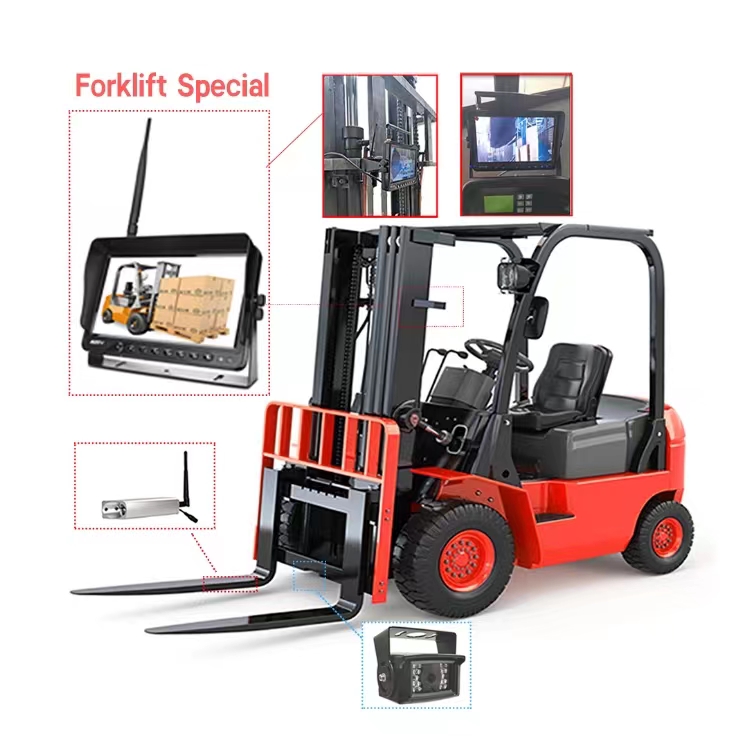In the fast-paced realms of industry and warehousing, the pivotal role of forklifts in material handling cannot be overstated. To meet the demands of safety and operational efficiency, the deployment of forklift safety cameras has emerged as an indispensable solution. This article delves deeper into the significance and diverse applications of these cameras, shedding light on how they contribute to workplace safety across a spectrum of industries.
Importance:
1. Accident Prevention: Forklifts, navigating through busy environments, often encounter blind spots. The incorporation of safety cameras mitigates this challenge, empowering drivers with heightened visibility to prevent collisions and accidents.
2. Driver Assistance: Real-time video monitoring acts as a boon for forklift drivers, offering a comprehensive view of their surroundings. This assistance proves invaluable, especially in navigating through tight spaces, corners, and intricate stacking areas.
3. Behavior Monitoring: Safety cameras extend beyond real-time monitoring; they record and analyze driver behavior. This feature aids in ongoing training programs, fostering improved habits and contributing to an overall safer work environment.
4. Accident Recording: Beyond prevention, safety cameras serve as objective record-keepers. In the unfortunate event of an accident, the footage provides invaluable insights for post-incident investigations, enabling organizations to understand root causes and implement preventive measures.
5. Increased Efficiency: The benefits of safety cameras extend to operational efficiency. By delivering clearer visibility and minimizing accidents, these cameras play a vital role in boosting the overall efficiency of forklift operations, reducing downtime, and minimizing financial losses.
Application Places:
1. Industrial and Manufacturing: On bustling production lines, forklift safety cameras facilitate seamless material handling, elevating productivity and concurrently reducing the likelihood of accidents.
2. Warehousing and Logistics Centers: In expansive warehouses, safety cameras guide forklift operators through narrow aisles, aiding in the reduction of collisions and safeguarding goods from damage.
3. Construction Sites: Safety in construction sites is paramount. Forklift cameras contribute by providing real-time visibility, thereby minimizing risks in complex and dynamic environments.
4. Ports and Freight Docks: The bustling activity of ports demands precision in loading and unloading operations. Forklift safety cameras ensure these operations are conducted efficiently and safely.
5. Retail and Supermarkets: In retail settings, cameras play a crucial role in preventing collisions, enhancing navigation, and safeguarding both customers and merchandise.
6. Agriculture: In agricultural settings, forklift cameras provide an additional layer of safety, ensuring the efficient handling of crops and equipment.
7. Healthcare Facilities: In medical facilities, where precision and safety are paramount, forklift safety cameras contribute by ensuring the secure handling of medical equipment and supplies.
In conclusion, forklift safety cameras prove to be indispensable tools in fostering workplace safety and operational efficiency. Their diverse applications across industries underscore their adaptability and importance in creating secure work environments. As workplaces evolve, the role of these cameras becomes increasingly vital in ensuring the well-being of both personnel and assets.


